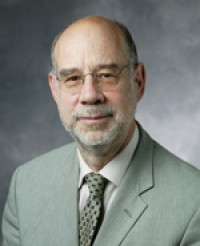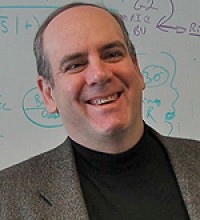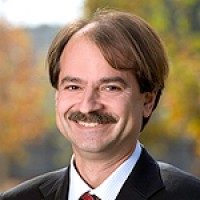Population studies at heart of initiative to improve health
Population studies at heart of initiative to improve health

Harry Greenberg
In an era of personalized medicine, the idea of our collective health may seem a bit old-fashioned. But as our growing population ages and alarm bells sound about the appalling prevalence of serious health threats such as obesity, diabetes, heart disease and cancer, physicians, researchers and policy-makers alike are taking notice.
“If we don’t solve these problems, our country will be in deep trouble,” said Harry Greenberg, MD, the senior associate dean for research at the Stanford School of Medicine. “Stanford, with its unique strengths in research, and in analytic and computational biology, is uniquely positioned to address the question of how to deliver better health care to our population.”
The answer may lie in the emerging discipline of population health sciences, which brings together the knowledge of basic research, clinical care delivery, behavioral sciences, epidemiology, prevention and more to devise more effective ways of caring for both healthy and sick individuals.
Over the past year, Greenberg has facilitated a brainstorming and planning effort around a new Stanford population health sciences initiative, culminating in a panel presentation led by Dean Philip Pizzo, MD, at the medical school’s annual strategic planning retreat on Jan. 21. The presentation capped a year of discussions and meetings among the many Stanford faculty interested in the field. Panel participants and many attendees agreed that the time is ripe to move forward in making the initiative a reality at Stanford, and endorsed a white paper that outlined the initial implementation plans.
“Population health sciences is primarily focused on deriving knowledge from groups of people, with the goal of directly applying what’s learned to improve the health of the members of the group,” said associate dean for clinical and translational research Steven Goodman, MD, PhD, who participated on the panel.

Steven Goodman
Large clinical trials to determine the effectiveness of a potential treatment for type-2 diabetes, for example, are an obvious fit in a population health sciences approach to the issue, said Goodman, but they’re just the tip of the iceberg. Other aspects could include a study of ways to enhance medication compliance, an investigation of how primary care physicians interact with and monitor their diabetic patients and a public health initiative aimed at preventing the development of the disease by teaching healthy eating habits.
“Although basic research is very important to further the understanding of how and why the disease develops and to develop therapies, we can never predict exactly how drugs or other interventions will work in the real world,” Goodman said. “That involves a complex set of considerations. It’s not just biology, but also includes behaviors of patients and doctors, not to mention the home and social environment. These things interact to produce results that are difficult to anticipate in the laboratory.”
For example, a recent clinical trial investigating the effects of the intensive control of blood sugar levels in type-2 diabetics — something that previous findings suggested would be advantageous — found that mortality increased in the intensive therapy group, in spite of improved glucose control. The reasons for this are still not certain.
Stanford is uniquely placed to tackle these big questions, with tremendous strengths in the various fields throughout the university that could contribute to this discipline. Within the past several years, the medical school has also successfully recruited a number of outstanding faculty in areas relevant to population health sciences, including Goodman; professor of medicine Mark Cullen, MD; professor of medicine Arnold Milstein, MD; John Ioannidis, MD, DSc, who directs the Stanford Prevention Research Center; and Robert Harrington, MD, the incoming chair of the Department of Medicine.
“The last several years have witnessed several important convergences,” wrote Pizzo, in discussing the initiative in a recent issue of his newsletter. “One is the range of existing and new talent in the broad discipline of population health science at Stanford, ranging from epidemiology to clinical and bioinformatics to outcomes-based and health-delivery research at the local, community and global levels. Another is the broad and deep set of opportunities and intersections in population health science that exist across the medical school, medical center and university. … It is a very exciting initiative — which can be truly transformative.”
The next steps involve establishing a firm vision for the initiative, designating interim and permanent faculty leadership, developing a training curriculum for students, identifying funding sources and investigating the space and staffing needed to bring together the researchers whose work falls under the auspices of population health.

John Ioannidis
“We’d like to crosslink forces, and bring together people working in different locations in the medical school and the university,” said Ioannidis, who compared the effort with the development of Stanford’s interdisciplinary Bio-X program. “We are looking for new ways to attack important questions, perhaps by creating data repositories or a study-design center available to all researchers in the program.”
“This is a very big area,” agreed Greenberg, “that touches on many groups here at Stanford, including the Department of Health Research and Policy, the Stanford Prevention Research Center and the Division of General Medical Disciplines as well as the fields of statistics, informatics, economics, behavioral psychology, community-based research and sociology. The key will be figuring out how to facilitate discussion and productive collaboration among these multiple groups without interfering with all of the great work each is doing on its own.”
Proponents of population health at Stanford would also like to begin to explore master’s and PhD training programs for students interested in the growing field.
However, said Greenberg, “We’re not trying to create a school of public health, but instead, for example, to take advantage of the very substantial computational abilities here at Stanford to address questions at the confluence of basic biology, economics and health-care delivery. There are really scientific ways to figure out how to improve health-care efficiency, not just at Stanford, but across the country.”
One example involves devising ways to efficiently mine the huge amounts of data generated by the growing use of electronic health records to look for patterns in drug response or disease development. Another focuses on quicker, more effective ways to conduct clinical trials by randomizing patients into treatment groups during a routine medical appointment.
Funding a new program is always an issue. According to Greenberg, however, there is a growing awareness of the need for studies of population health in which the National Institutes of Health as well as private foundations are eager to invest. Here at Stanford, the most recent round of Spectrum Innovation Awards focused in part on population sciences and included grants to promote the integration of infectious diseases into population surveys, and to develop a new screening device for neonatal jaundice in India.
“The further convergence of population health sciences with early disease detection and diagnostic tools arising from genomics and proteomics as part of ‘prediction medicine,’ coupled with imaging and detection devices as well as informatics and statistics, offer the prospect of major transformations in health preservation and disease management,” said Pizzo.
In the end, there need be no choice made between personalized medicine and population studies, said Ioannidis.
“Every large population is made up of individuals, and it’s not possible to provide the best health care for one person without understanding how the health of the larger group is determined. We have to compare and juxtapose an individual against his or her background, and make comparisons with many other individuals, in order to make the best choices. We now have a way to take all the technology and measurements that we’ve been getting in the research laboratory and test them in populations to see what kind of an impact we can make. There is no other way than testing these ideas in large scale in real human beings.”
By Krista Conger
Stanford University Medical Center
###
* Stanford University Medical Center integrates research, medical education and patient care at its three institutions – Stanford University School of Medicine, Stanford Hospital & Clinics and Lucile Packard Children’s Hospital.
** The above story is adapted from materials provided by Stanford University School of Medicine
________________________________________________________________


















